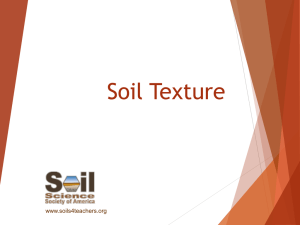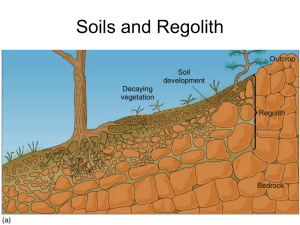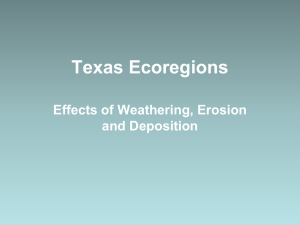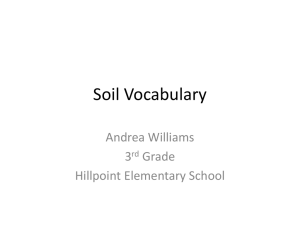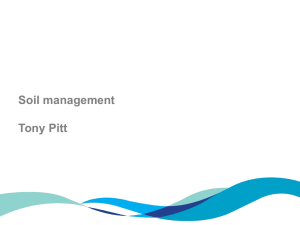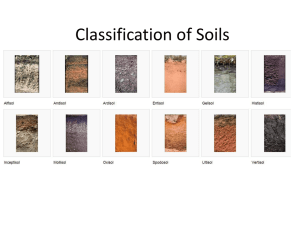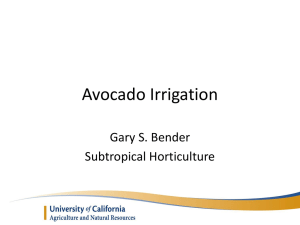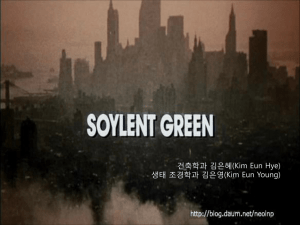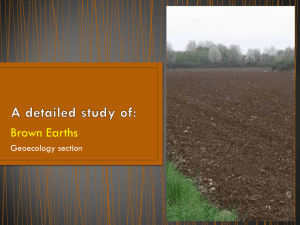Dirt: Secrets in the Soil
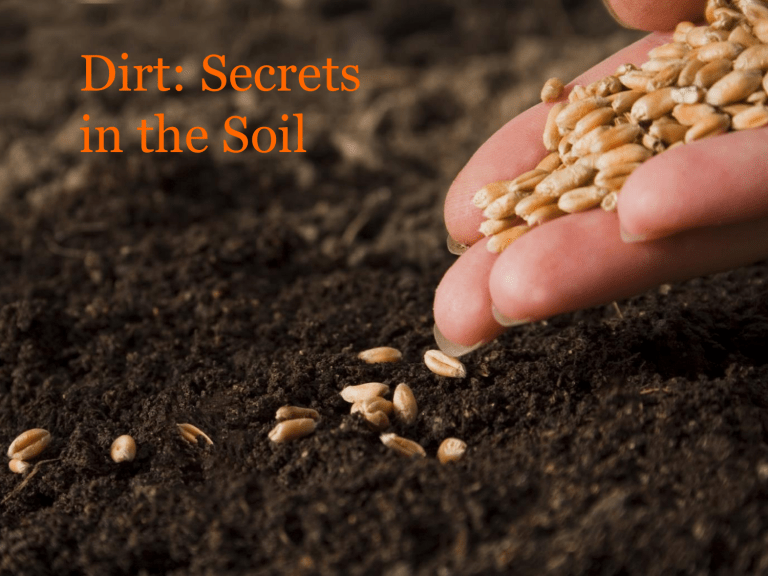
Dirt: Secrets in the Soil
How Much is Dirt Worth?
How Much is Dirt Worth?
• Soils produce our food. They are essential to our survival.
How Much is Dirt Worth?
• Soils produce our food. They are essential to our survival.
• Good soils are a limited, nonrenewable resource.
How Much is Dirt Worth?
• Soils produce our food. They are essential to our survival.
• Good soils are a limited, nonrenewable resource.
• It takes an average of 100 to
500 years to make 1 inch of topsoil.
How Much is Dirt Worth?
• Soils produce our food. They are essential to our survival.
• Good soils are a limited, nonrenewable resource.
• It takes an average of 100 to
500 years to make 1 inch of topsoil.
• It costs the farmer more to produce good crops on poor soil. That means higher prices in the grocery store.
Types by Texture
• Soils are made of tiny pieces of rock or minerals.
• Determining soil types helps us know when and how to plant and water crops.
• Soil texture refers to the size of the particles that make up the soil. The relative proportion of sand, silt, and clay particles in a soil defines its soil texture.
Sand
Sand, Silt, and Clay
large particles settles in
1 minute coarse and gritty water moves through quickly
Silt
Clay medium particles settles in
3-4 hours smooth, soft, and slick holds water tiny particles settles in
3-7 days sticky difficult for water to flow through
Soil Permeability
• Sand, silt, and clay are inorganic materials.
• The best kind of soil for plants allows water to move through slowly enough that some of it stays in the soil for plants to use.
• Humus acts like a sponge to help the soil capture water and is formed when plants and animals die.
• Humus helps soil store more water, prevents erosion, and produces better crops.
Keeping Soil in its Place
• Erosion is the loosening, transportation, and relocation of soil particles from one place to another and occurs primarily due to the action of wind and water.
• The rate and extent of erosion are determined by soil type and condition, slope of the land, plant cover, land use, and climate.
• Raindrop splash erosion is the first stage of the water erosion process followed by sheet, rill, and gully erosion.
Dark Days
• The Dust Bowl refers to the time during the 1930’s when drought, prairie winds, and poor land use practices made farming nearly impossible.
• The dust bowl region of the United States includes parts of
Texas, Oklahoma, New Mexico, Colorado, and Kansas.
Dark Days
• The west had its own areas of dust storms and soil erosion in the 1930’s that caused the same economic and ecological problems as the ones occurring in the Great Plains.
• The Grantsville dust bowl was caused from overgrazing, fires, plowing, and drought.
• From the time the Tooele
Valley was settled it was one of the most popular winter grazing areas in the west.
• Slowly, overgrazing caused the range to become almost barren.
Color in the Garden
• The Munsell Soil Color Charts is a book of soil colors based on the soil classification system used by scientists for describing soils.
• This book is used worldwide by agronomists, biologists, archeologists, geologists, zoologists, to document soil colors.
• Over the centuries, humans have used soil colors to serve as pigments in bricks, pottery, and art work.
• These artifacts from the past give us an idea of how early people lived and work.
Color in the Garden
General rules about soil color:
• Black, Black/Brown: Soil that has high organic matter content and nutrients for plants. These are deep soils formed mainly of materials transported by water, ice, or gravity.
• Gold/yellow: Soil from certain sandstones.
• Taupe: Clayey soils with lower organic matter content. Soils formed mainly in residual materials from ancient sea beds.
• Red: Soil with high iron content
• Cream: Soil with high amounts of lime or formed with wind-blown silty material.

